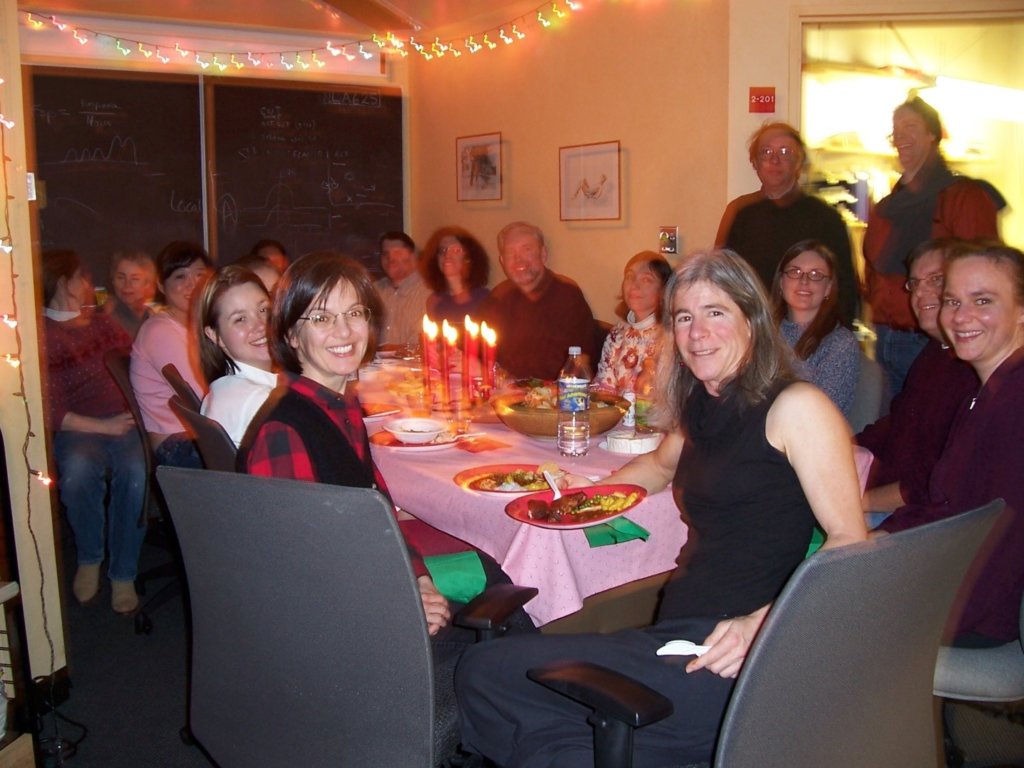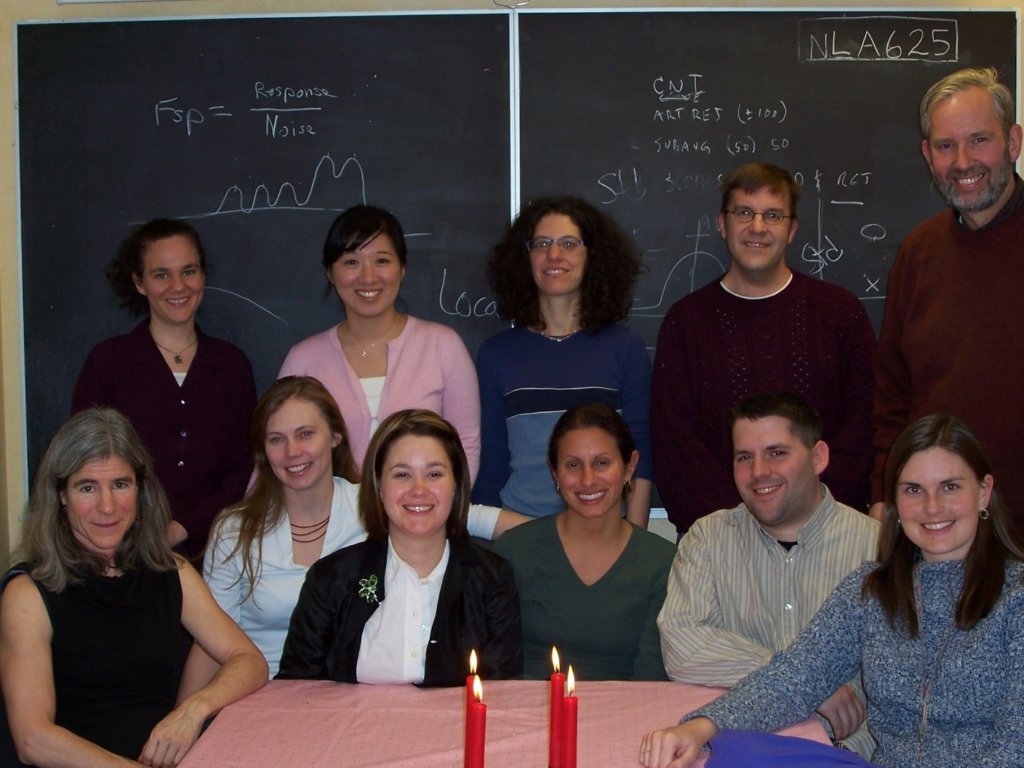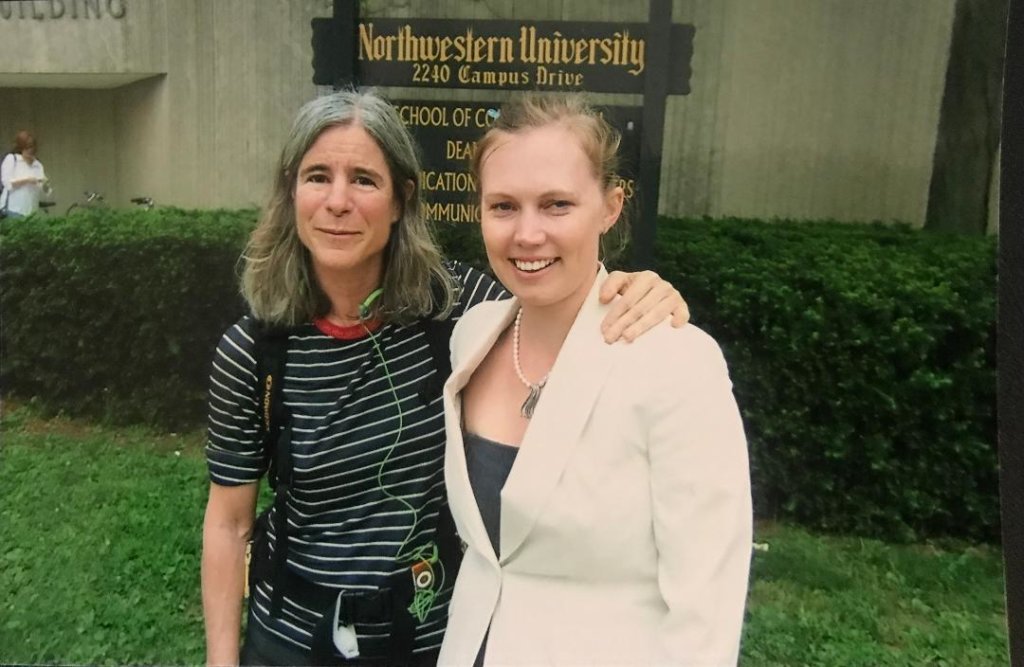Listening, Learning and the Brain of Nina Kraus
The brain of Nina Kraus is expansive, constantly searching and testing, but also demands the best and deepest work from her students. The Kraus lab was humming with activity and excitement when I joined. The main research project that all lab members contributed to, and drew data from, was called “Listening, Learning and the Brain.” The LLB project focused on testing the hypothesis that auditory encoding of speech was related to childhood learning deficits. The project had just produced several critical papers showing evidence that supported this link.1–3. When I look back, it seemed like we had children coming in and out all day, seven days a week. It was a constant stream of calibration, electrode application, electrode removal, audiometry, speech testing (with and without noise), and flipping standardized test booklet pages. Lab meetings were at lunchtime every week, and we were all on a rigorous diet of data collection and analysis. In my first years, the lab published two seminal papers showing frequency-following response deficits in children with learning problems4 and a reduction of the speech-evoked FFR when presented in noise.5
I had come to the Kraus lab with a question. My experience as a professional musician prompted me to ask why people get more excited when they see live music than when they just listen? Nina, a musician and a music lover herself, paired the question with audiovisual methods to answer it. We set about to answer that and determine if musicians themselves had different FFR encoding compared to non-musicians. I learned everything about electrophysiology in Nina’s lab from the ground up. Her philosophy was that I needed to know how to put the presentation systems together and take them apart if I could be a successful independent researcher. She and the lab manager, Trent Nicol, insisted that I read the manual before asking a question. There was tremendous support and quite a bit of fun, too. We had holiday parties, conferences, visiting scientists (including my other mentor, Mikko Sams), and even dodgeball playoffs. It was a family. In the end, Nina and I found out that auditory and visual information combines in the brain to create a supramodal FFR response that is larger than either the visual or auditory alone.6 Nina and I also answered the musician question, showing, for the first time, that musicians have enhanced FFRs to speech and music stimuli, compared to non-musicians.7,8
Today, I still rely on the skills and culture I learned in the Kraus Lab. So far, I have started two electrophysiology labs from four bare walls. I have grown from post-doc to professor to department chair. I love to listen and learn from the people around me, especially students who have unusual questions. But, more than anything, I strive to create an educational environment that feels like family. I believe that is one of Nina’s enduring legacies: inspiring generations of scientists to move hearing science forward and nurture the visionaries and leaders of tomorrow.



References
- Cunningham J, Nicol T, Zecker, SG, et al. Neurobiologic responses to speech in noise in children with learning problems: deficits and strategies for improvement. Clin.Neurophysiol 2001;112(5):758–767.
- Kraus N. Auditory pathway encoding and neural plasticity in children with learning problems. Audiol.Neurootol 2001;6(4):221–27.
- Tremblay K, Kraus N, McGee T, Ponton C, and Otis B. Central auditory plasticity: changes in the N1-P2 complex after speech-sound training. Ear Hear 2001;22(2):79–90. doi:10.1097/00003446-200104000-00001
- King C, Warrier CM, Hayes E, and Kraus N. Deficits in auditory brainstem pathway encoding of speech sounds in children with learning problems. Neurosci Lett 2002; 319:111–115.
- Russo N, Nicol T, Musacchia G, and Kraus N. Brainstem responses to speech syllables. Clin.Neurophysiol 2004;115(9):2021–2030.
- Musacchia G, Sams M, Nicol T, and Kraus N. Seeing speech affects acoustic information processing in the human brainstem. Experiment Brain Res 2006;168(1-2):1–10. doi:10.1007/s00221-005-0071-5
- Musacchia G, Sams M, Skoe E, and Kraus N. Musicians have enhanced subcortical auditory and audiovisual processing of speech and music. Proc Natl Acad Sci U S A 2007;104(40):15894–15898. doi:10.1073/pnas.0701498104
- Musacchia G, Strait D, and Kraus N. Relationships between behavior, brainstem and cortical encoding of seen and heard speech in musicians and non-musicians. Hear Res 2008;241(1-2):34–42. doi:10.1016/j.heares.2008.04.013

